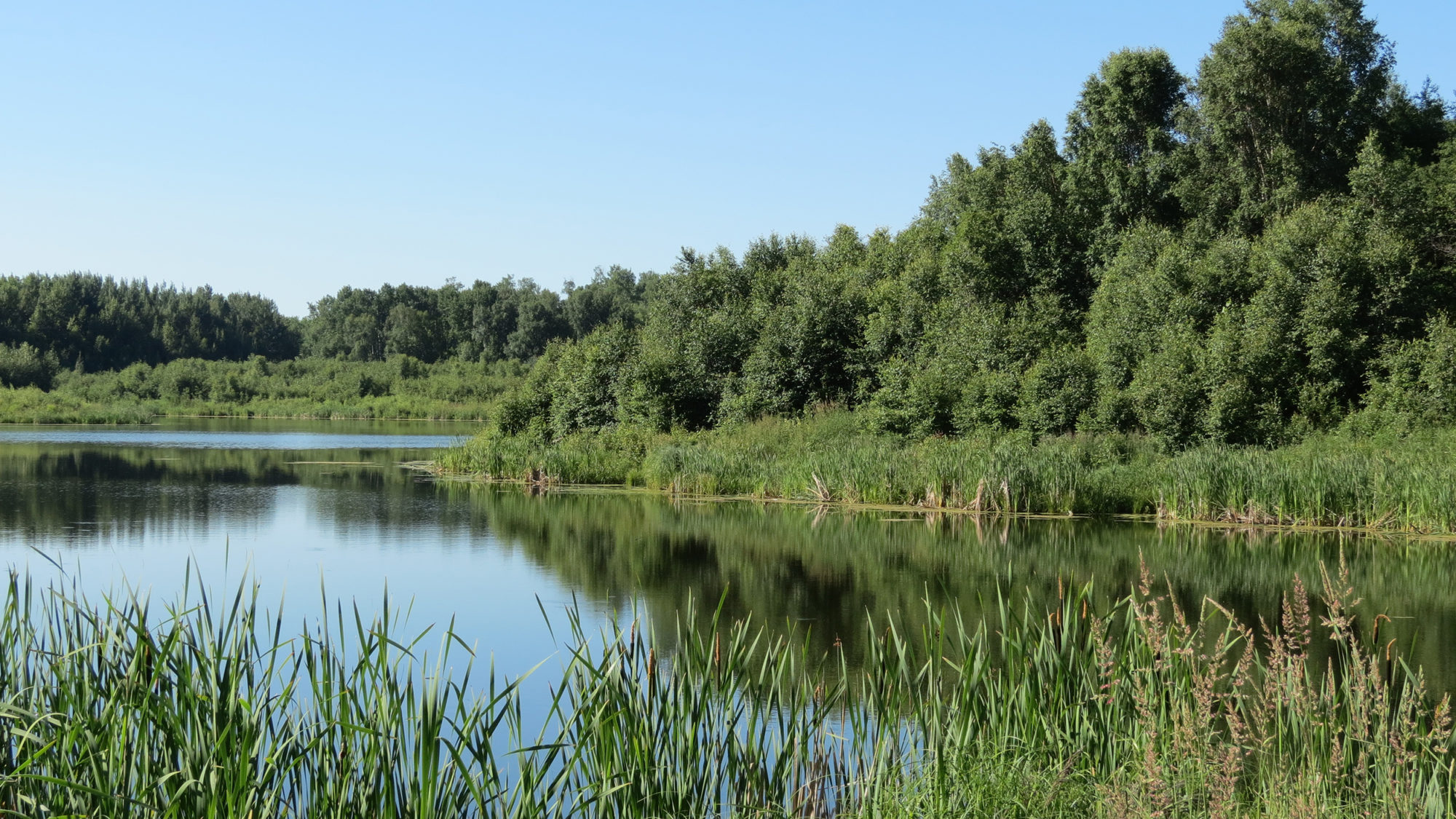Access to outdoor space is vital to our well-being. Fortunately, Alberta has a lot of it. You don’t even have to head to the Rockies or the Badlands for a day of fresh air and exploration: There are many unique conservation areas just a short drive away.
Since 2007, the Edmonton and Area Land Trust (EALT) has secured more than a dozen such spaces—to protect native wildlife and their ecologically sensitive habitats, but also for the enjoyment of all Albertans. We’ve noted a few of our favourites, below. These conservation lands are open for day use and free to wander. Just make sure you follow best practices for hiking: wear appropriate clothing and shoes; bring sufficient water, snacks, sunblock and a first-aid kit; and always let someone else know about your plans, as cellular service is not always reliable.
And remember, too, that these are sensitive areas, so the golden rule of natural exploration applies: Take only pictures and leave only footprints.
HICKS CONSERVATION LAND
The first conservation area secured by the EALT (in 2009), the 60-hectare Hicks site is part of the Beaver Hills Biosphere, designated by UNESCO for its ecological and historical significance: Long an important resting ground for Indigenous peoples travelling between foothills and plains, the region also boasts a distinct mix of forests, wetlands and hummocky terrain. Hicks’s gently rolling, 1.9-kilometre loop trail takes hikers through aspen woods and tranquil marshes that are home to various species of woodpecker and waterfowl—among many other birds and beasts.
GLORY HILLS CONSERVATION LAND
North of Stony Plain, this area’s Cree name, maskihkîy meskanaw, means “medicine trail.” Its four kilometres of branching paths are blazed across a varied landscape: boreal forest, aspen parkland, and grass- and wetlands. The main route winds past serene Stirling Lake, frequented by local moose, deer, beavers, loons and more. Make it to the end of the trail and you may be rewarded with a great blue heron sighting: There’s a colony at Glory Hills’ northwestern corner. Experienced hikers can challenge themselves by making the return trip along a sloping track that follows the park’s eastern border.
MORE TO READ
Our favourite away-from-the-Rockies hiking trails
LARCH SANCTUARY
Just off 23rd Avenue in the thick of southwest Edmonton, this portion of the Whitemud Creek ravine system is a true urban refuge. The mixed forest provides habitat for a wealth of species, from large (white-tailed deer) to small (meadow voles). Bring your binoculars to spot the 40-plus bird species that nest and breed in the area. You’ll also see bat boxes and a bee hotel en route, evidence of EALT’s ongoing conservation efforts. Be wary of strolling Larch Sanctuary’s trails after a rainfall: they’re partially composed of bentonite, a clay that is quite slippery when wet.

PIPESTONE CREEK CONSERVATION LAND
Many Albertans have heard of the Pipestone Creek bone bed, a palaeontological trove of prehistoric fossils outside of Grande Prairie. About 80 kilometres south of Edmonton, however, Pipestone Creek Conservation Land is a haven for dinos’ descendants—everything from heron to hermit thrushes and dozens of other species in between. (Trumpeter swans can even be spotted during their migration.) Look for more than 30 bird-nest boxes along the easygoing 5.5-kilometre trail.
GOLDEN RANCHES CONSERVATION LAND
At more than 560 hectares, this nature preserve near Cooking Lake is EALT’s largest. There are no formal trails, but you can still explore the area’s wide-open grasslands and forests—just keep your eyes peeled for ground-nesting birds. (You might also spot mammals ranging from porcupines to moose.) Within the Beaver Hills Biosphere, the area is also a dark sky preserve, perfect for summertime stargazing.
MORE TO READ
Diamonds in the rough: the best under-the-radar Alberta golf courses
COATES CONSERVATION LAND
Southwest of Devon, Coates is part of an important natural corridor that gives local wildlife sanctuary from the surrounding agricultural lands. The woodsy area features a mix of aspen, poplar, birch and spruce, while the undergrowth is equally abundant: honeysuckle, fairy bells, wintergreen and many species of fern keep things verdant throughout the spring and summer. The hike can be challenging, however: A 1.3-kilometre out-and-back trail has some steep gradations (and occasional stairs), while the pair of creek crossings may be difficult to navigate following rain.
LEARN MORE
Visit the EALT online to view trail maps, find out more about the organization’s conservation efforts and learn how you can get involved.
